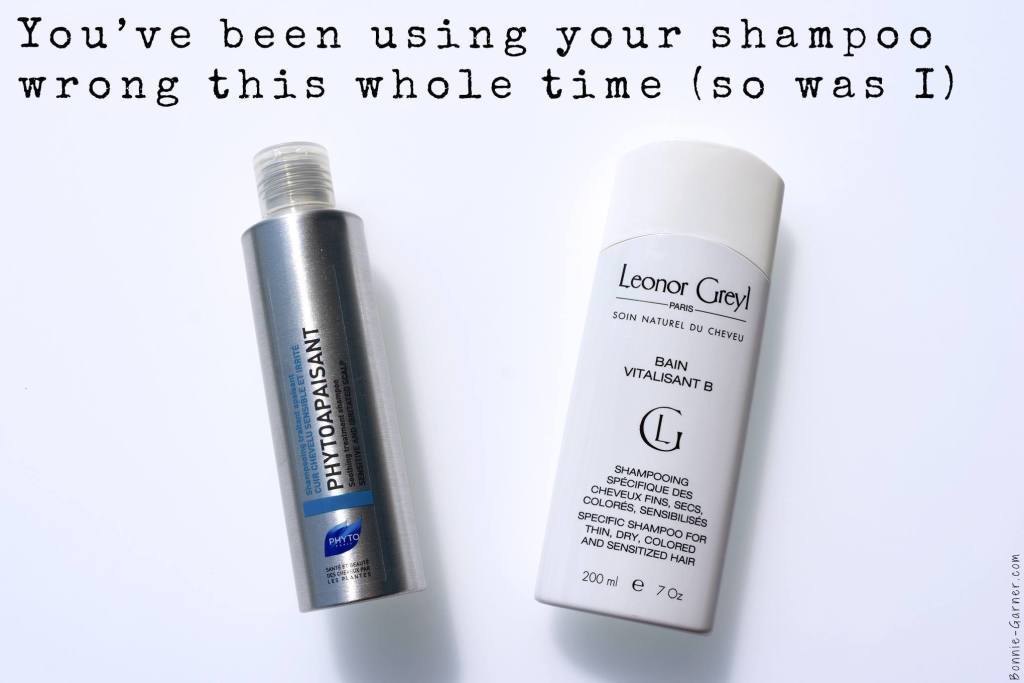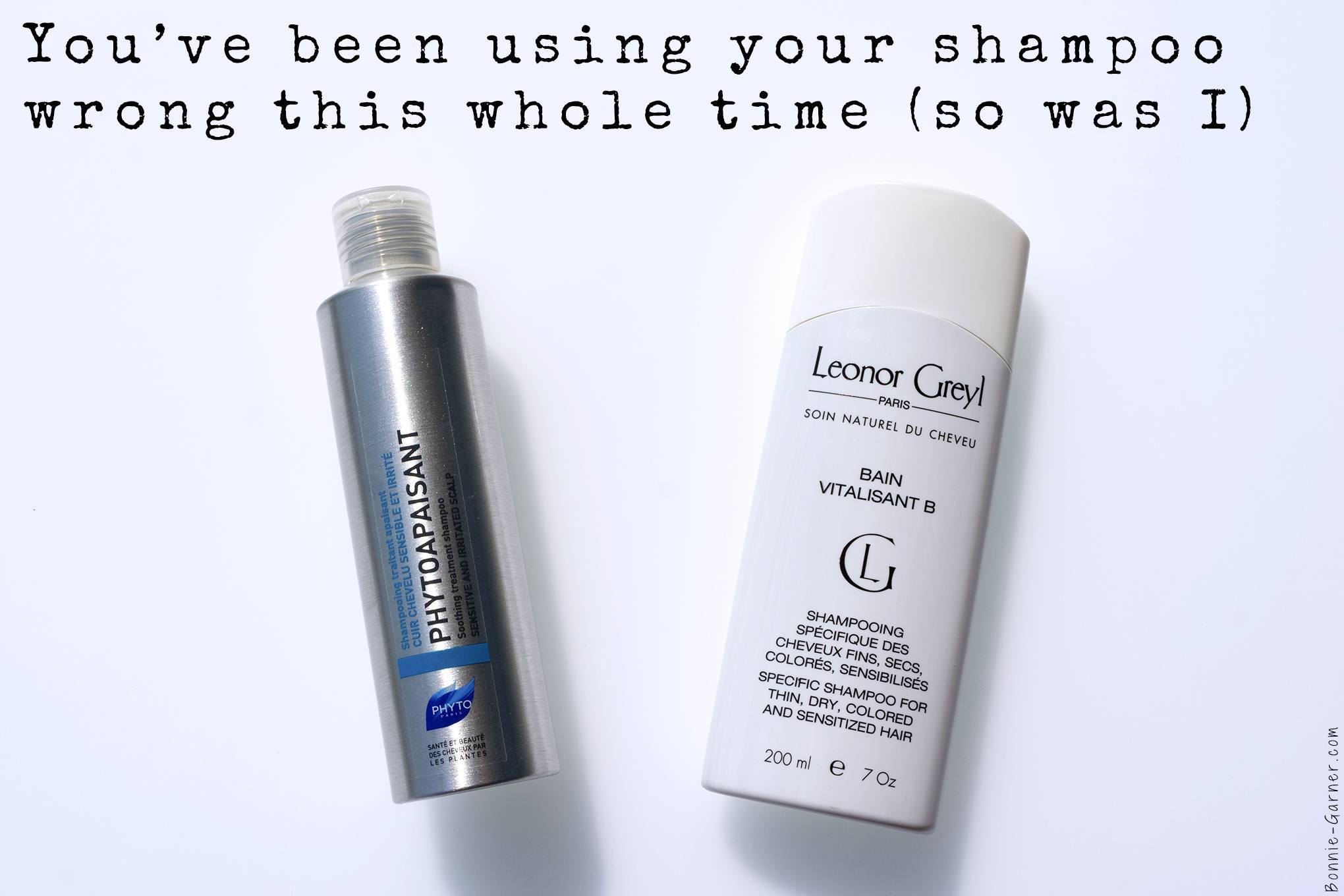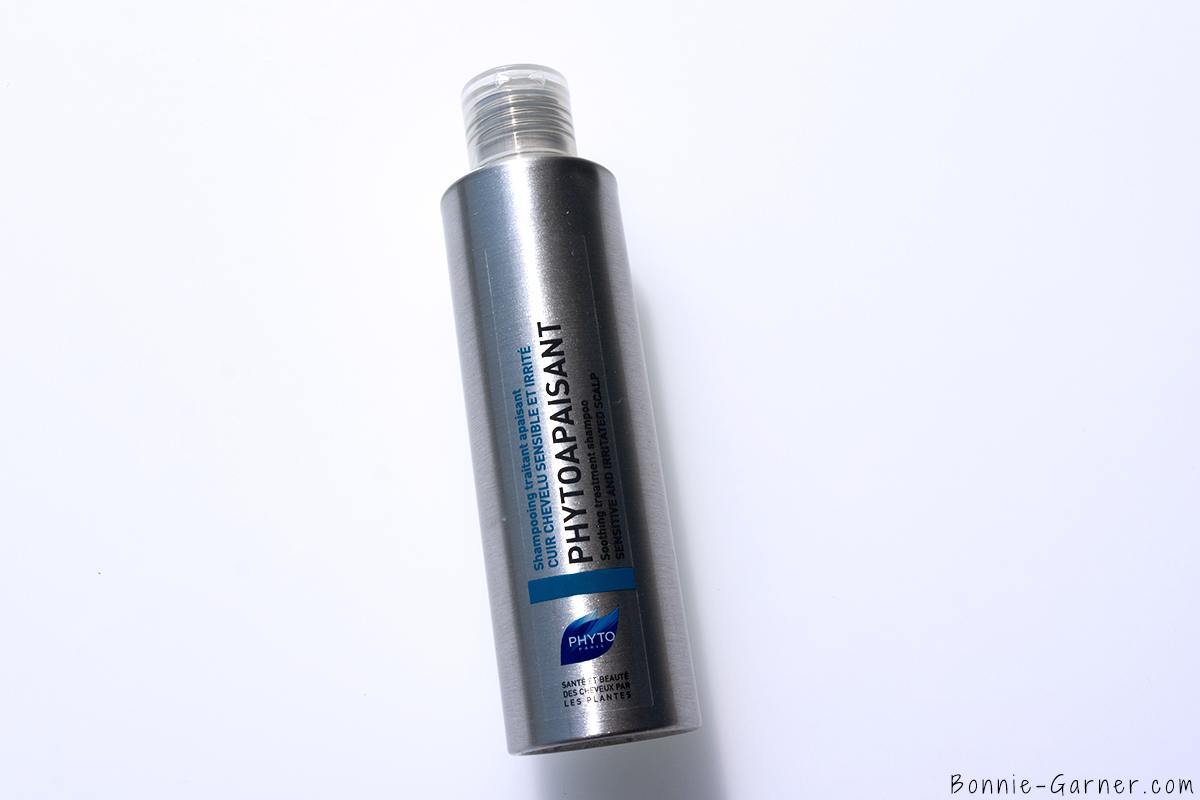“What? She thinks she can teach us how to use something as simple as shampoo? It’s not rocket science, is it?”
Well believe me, it’s not as simple as you think! wink
Between taking care of your hair and damaging it, the line is a thinner than you think. Washing your hair is more often than not a daily gesture, so you can imagine how easy it is to create havoc with your hair after a while if you’re not doing it right.
An itchy scalp, dandruff, damaged lengths, hair getting oily quickly… These are signs that are not necessarily associated with a poor use of the shampoo. But believe me, sometimes the simplest answer to your question is the right one!
Here are 5 common mistakes relating to the use of shampoo, that ultimately, may end up ruining your dream hair: (#scary I know! wink )
The 5 common mistakes with shampoo
1/ Choosing shampoo according to your hair:
“Well of course I choose my shampoo according to my hair! Why not?”
Yes, except sometimes this would be wrong. A shampoo is chosen according to your scalp, not the state of your lengths and ends. And yes, I know, it’s super disturbing because on all the shampoo without exceptions, you see written on the packaging “shampoo for oily, dry, damaged HAIR” etc.
However, it’s your scalp that needs washing, not really the lengths and ends.
That’s why many of us use two distinct products: a shampoo and a conditioner. Their objectives are very different.
The shampoo will clean the roots and purify the scalp while the conditioner (or hair mask) repairs, moisturizes and nourishes the lengths and ends.
There is also no need to thoroughly wash the lengths and the ends of your hair as you risk damaging them in the long term; the foam formed by the shampoo used on the scalp will slip naturally throughout the hair when you rinse it and will clean the lengths and ends gently.
And also, no need to use conditioner on the roots, you will mainly just grease your scalp unnecessarily.
To sum it up here, if your scalp is very greasy (it gets oily after 1 day), you must use a shampoo for oily hair.
If your scalp is rather dry (it feels tight and doesn’t get oily for at least 5 days or a week), a shampoo for dry hair will be perfect for you.
If it’s itchy, and/or if you have dandruff, a soothing shampoo will be the best choice.
For the rest: colored hair, damaged hair, curly hair, etc, rather bet on a good hair conditioner and/or a hair mask that will be clearly more effective on your lengths and ends which need the extra care.
2/ Using too much product:
When you clean your hair, you usually want it to be quick and you also want it to be perfectly clean at the end. So, the risk here is to take too much product to make sure your hair will be squeaky clean.
The problem here is not only the big waste of product (you don’t necessarily need a large amount for it to be effective) but it also increases the risk of not rinsing your shampoo properly (see mistake 5/ below ).
The right amount of shampoo you need to properly clean your hair is a small amount. To make it more meaningful, I showed you in the image below: in this picture, this amount is enough to be able to clean the entire scalp.
3/ Shampooing too much, too often:
Contrary to popular belief, doing 2 shampoos one after the other is not always necessary, especially if you wash your hair quite often (daily or every other day). Doing 2 successive shampoos is only recommended in cases where you wash your hair every 4-5 days or less frequently.
Washing your hair too much and too often tends to get your hair oily faster since all you do is scrubbing your scalp (yes, even with a very mild shampoo). And an assaulted scalp reacts by overproducing sebum for its own protection. The result is always greasy hair…
If you feel the need to wash your hair frequently, just shampoo once every 2 days, it’s really enough! smile
4/ Believing foamier shampoo, means better results:
Shampoo doesn’t need to foam a lot much to be effective.
On the contrary, products that foam profusely are often more aggressive because they often contain sulphates: Sodium Lauryl Sulfate or Sodium Dodecyl Sulfate (SDS), Sodium Laureth Sulfate (SLS) or Ammonium Lauryl Sulfate (ALS), which are quite harsh cleansers ingredients and can weaken the hair fiber after a while.
But however, they make your shampoo foam a lot!
The foam is interesting in a shampoo: it facilitates the spreading of the product on the surface you want to clean. In short, it makes cleaning everywhere easier.
For some time now, I decided to totally eliminate shampoos with sulphates because my scalp was itchy to the point that it had almost become unbearable (it kept me from sleeping, which is a bit annoying) (especially for my poor husband, because I am a little irritable when I don’t sleep enough ;P). I already talked about this problem in my post about the Crème aux fleurs by Leonor Greyl.
But the soft shampoos without sulfates or other harsh cleansing ingredients don’t foam as much as regular shampoo (sometimes, they don’t foam at all). And it’s very disturbing at first when you’re used to a beautiful, abundant and compact foam. A shampoo that takes 30 seconds to do and to rinse.
However, there is a technique that allows to easily use these kind of softer products without so much foam but will leave you with a squeaky clean and soothed scalp.
My soft shampoo technique:
I start by wetting well my hair (which I previously brushed dry to detangle it), and then I apply a little shampoo onto my roots.
I massage with my fingertips without rubbing, and I just gradually add a little bit of water, which will allow me to emulsify the product and form a light foam on the scalp. I don’t hesitate to thoroughly massage and “lift” my hair during this operation to be sure to evenly distribute the product everywhere. This also helps to activate the blood micro-circulation (which accelerates the hair growth, double bonus! :)).
When I feel a light foam, I rinse thoroughly with water until my hair squeaks between my fingers.
So yes, certainly, it takes a little more time than a conventional foaming shampoo, but my hair is impeccable and more important, my scalp is fresh, soothed and no longer itchy (and my marriage is saved wink ).
5/ Neglecting to rinse your shampoo properly:
Rinsing off your shampoo is a fundamental step.
You must rinse your hair a long time, until it squeaks between your fingers. Without that, it means that the shampoo is not completely eliminated.
Consequence: the hair is heavy, too soft, dull, difficult to style and it gets oily much faster.
Tip: rinse with vinegar
Rinse your hair with cold water with vinegar helps to stimulate the scalp and also to tighten the hair scales, making the hair super shiny. It also makes it very soft and light, it smooths it and it can also help de-tangling.
Vinegar also helps to neutralize hard water which tends to dull the hair and makes it oily faster.
Personally, I use organic apple cider vinegar. I dilute 5 tablespoons in a bottle of 1.5 liters of mineral water.
I use this water and vinegar as final rinse water.
You pour all of the mixed water and vinegar on your washed, conditioned and well rinsed hair (I’d recommend your head upside down / titled, it’s more convenient) and of course, not to re-rinse afterwards.
I swear, the smell of vinegar disappears quickly, and once your hair is dry, you can’t smell anything at all!
And you, what are your tips for an effective and soft shampoo?
Photos credits: bonnie-garner.com



